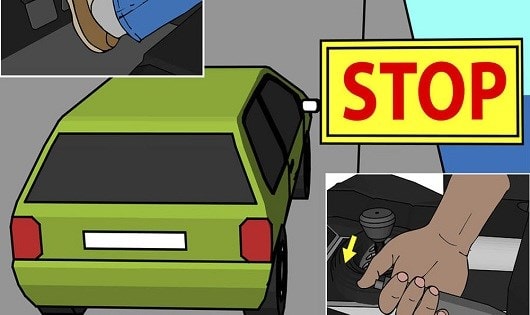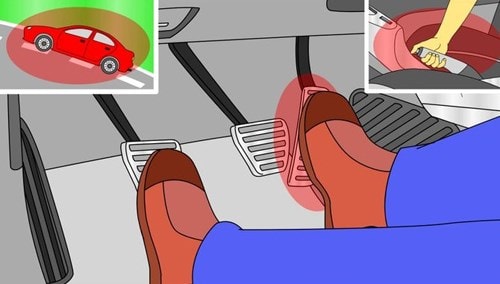Experience starting uphill with a manual transmission car
Uphill driving is one of the most difficult parts of the manual car driving test. For some inexperienced candidates, the uphill driving test is a nightmare because it is easy to fail. This is a difficult part of the test but it is completely possible to pass if we practice properly.
 |
With automatic transmission vehicles, starting uphill is as easy as pie, not to mention vehicles with hill start assist technology, so the concept of starting uphill is easily forgotten. With manual transmission vehicles, this is not a simple task because if not handled properly, the vehicle will roll, affecting the vehicles behind, even causing accidents.
Currently, there are 2 basic experiences on how to start uphill that new drivers should remember to operate the vehicle more effectively:
Use the handbrake
Using the handbrake (or emergency brake) is the safest and most effective way for drivers, especially new drivers, when needing to start the car on a slope.
Once the vehicle has stopped on a slope, the driver applies the handbrake, replacing the footbrake with the brake that holds the vehicle at a stop. The driver can then take his foot off the brake and put it on the accelerator.
When needing to move back from a stationary position on a slope, the driver cuts the clutch into gear and releases the clutch, stepping on the gas pedal as if starting normally on a flat road. At this time, the handbrake is still not down so the car certainly does not roll.
Continue to release the clutch slowly until you feel the steering wheel or gear lever vibrate (signaling that the clutch plates have engaged), then gently release the handbrake, listen to see if the car does not slide, then release the handbrake as well, the car will crawl up by itself. You can gently apply the accelerator if the car is not moving yet.
Use the clutch, accelerator and foot brake
This is a more adventurous method that experienced drivers often use in practice, which is not to use the handbrake. However, this method is only used for short stops and should not be used for long parking or stopping.
After the car stops, slowly release the clutch until you feel the steering wheel or gear lever vibrate, then gently release the foot brake and listen. If you feel the car drifting, step on the brake and try again. If you feel the car not sliding, release the foot brake completely, the car will crawl up by itself.
 |
Use the clutch, accelerator and foot brake
This is a more adventurous method that experienced drivers often use in practice, which is not to use the handbrake. However, this method is only used for short stops and should not be used for long parking or stopping.
After the car stops, slowly release the clutch until you feel the steering wheel or gear lever vibrate, then gently release the foot brake and listen. If you feel the car drifting, step on the brake and try again. If you feel the car not sliding, release the foot brake completely, the car will crawl up by itself.
If you release the foot brake completely and the car still stops, press the accelerator a little bit and release the clutch slightly more. Once the car is moving, keep the clutch and accelerator in the same position until the car passes the top of the hill.
When you first start driving, it is inevitable that you will stall a few times. This is normal, and you just need to practice a lot to gain experience to avoid serious mistakes such as: stopping past the line, stalling, and rolling downhill. Depending on your driving skills and experience as well as the situation on the slope, practice these two starting methods to control the car safely and most effectively.
According to VNN
| RELATED NEWS |
|---|

